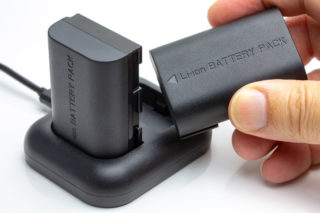Dramatic, Disruptive and Potentially Defective: 3D Printing and Product Liability Law
 There’s a revolution coming in manufacturing known as “stereotactic lithography.” Besides its certain future impact on manufacturing and supply chain logistics, the 3D printing revolution will challenge our long-held notions of products liability law and the common assumptions made regarding the liability of various entities in the chain of distribution.
There’s a revolution coming in manufacturing known as “stereotactic lithography.” Besides its certain future impact on manufacturing and supply chain logistics, the 3D printing revolution will challenge our long-held notions of products liability law and the common assumptions made regarding the liability of various entities in the chain of distribution.
The Product
At the risk of oversimplification, 3D printing is essentially a process by which a machine can turn a design blueprint into a physical product. Instead of starting with a block of material and cutting away from it – think of how a lathe cuts a block of wood to produce pieces of furniture or even a baseball bat – a 3D printer actually builds the object from the “ground” up by adding tiny “slices” of material. A three-dimensional design plan is fed into the printer, a material is selected (plastic or rubber, for example) – much like one selects “black and white” or “color” when printing a document – and the 3D printer makes many passes as it slowly builds the object layer by layer.
Have you lost an earring? No problem. Simply take your remaining earring and have the 3D printer make you a new one. Thinking of starting your own business? Then print hundreds or even thousands of whatever you want to sell and you’re ready to open a storefront or run a mail-order business.
The 3D printing industry is expected to continue to grow exponentially over the coming years. By one estimate, the market for 3D printers will grow by nearly 25 percent annually to nearly $11 billion by 2021, resulting in a large segment of American manufacturers returning their production to the United States from offshore sites. The industry promises to be transformative in its impact while shattering long-standing business models and forever changing global trade and supply-chain logistics.
Internet-based businesses will gladly “print” an artifact from your scanned design and mail it to you – all for a fee, of course. Major manufacturers such as GE, Oreck and Boeing are reportedly using the process to manufacture rubber, plastic, steel or glass parts that used to be made overseas. Jay Leno has reportedly used 3D printers to make “no longer in stock” replacement parts for his collection of classic cars. Future use of 3D printers may be limited only by our collective imagination as more and more technical barriers are broken over time.
The Law
So, where’s the conflict between 3D printing and products liability law as we’ve come to know it? At the risk of oversimplification, we know that products liability law can impose liability against any entity in the chain of distribution, while recognizing various potential defenses to such liability. In a “3D world,” however, identifying those potential defendants may not be that easy.
Check out this scenario: Dad takes his daughter’s Brand X bicycle helmet and decides to make a replica for her best friend, Sally Plaintiff, so that the two of them can go riding around the neighborhood. In so doing, however, he changes the helmet’s design just a bit by bringing the shell of the helmet closer to the wearer’s eyes and lower on the forehead. [This way, Dad thought, Sally would be better protected as more of her face is shielded.] Dad pays a modest fee to an Internet-based 3D printing business and receives the 3D-printed helmet in the mail a few days later. Dad’s daughter and Sally go riding in their suburban neighborhood. Unfortunately, Sally is struck by a car when she does not see it approaching from her right as she crosses a street on the bicycle. She suffers significant injuries.
Sally’s lawyers feel that the helmet did not meet CPSC standards regarding peripheral vision and advocate a lawsuit. But, who do they sue? Was Dad the “designer” of the helmet, or was it the Brand X company? Can Dad escape liability by saying that he was just following Brand X’s design or did he become the “designer” because he modified Brand X’s original design?
Looking to keep Brand X’s deep pockets in the case, can Sally’s lawyers argue that Brand X knew, or should have known, that their helmets could be used as a base design in 3D printing and that the company should have done “something” to make their helmets “3D proof”? How about the makers of the software that scanned the original helmet into a CAD-like design? Are they the “designers” of the replicated helmet?
Who is the “manufacturer” under this scenario? Is it Dad, who took Brand X’s design, changed it and sent it to the 3D printing website? Is it the 3D printing website, when all they did was process Dad’s order? Is it the manufacturer of the 3D printer that was used by the website to replicate the helmet?
Is Dad immune from a products liability lawsuit because he was just a “casual” manufacturer of the helmet and not one who was in the regular business of designing and manufacturing bicycle helmets? What if Dad, so impressed by his handiwork, has started making helmets by the dozens and is selling them all over town? Does the “casual manufacturer” defense apply to that scenario?
What about the Consumer Product Safety Commission’s regulations? Do they even apply to this imagined scenario?
I don’t pretend to know the answers to these questions, and suffice to say that a full discussion of all of them is well beyond this posting. 3D printing is here, however; it’s real and estimates are that the industry will grow in the coming years.
How will the law evolve to answer these questions? Stayed tuned. Future generations of products liability lawyers will have to sort this all out.
In the meantime, be careful before you hit “PRINT.”
This blog post was published originally on November 14, 2013.


 By
By





